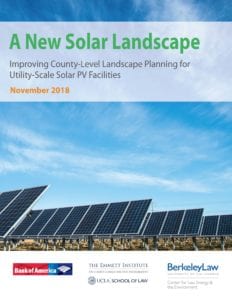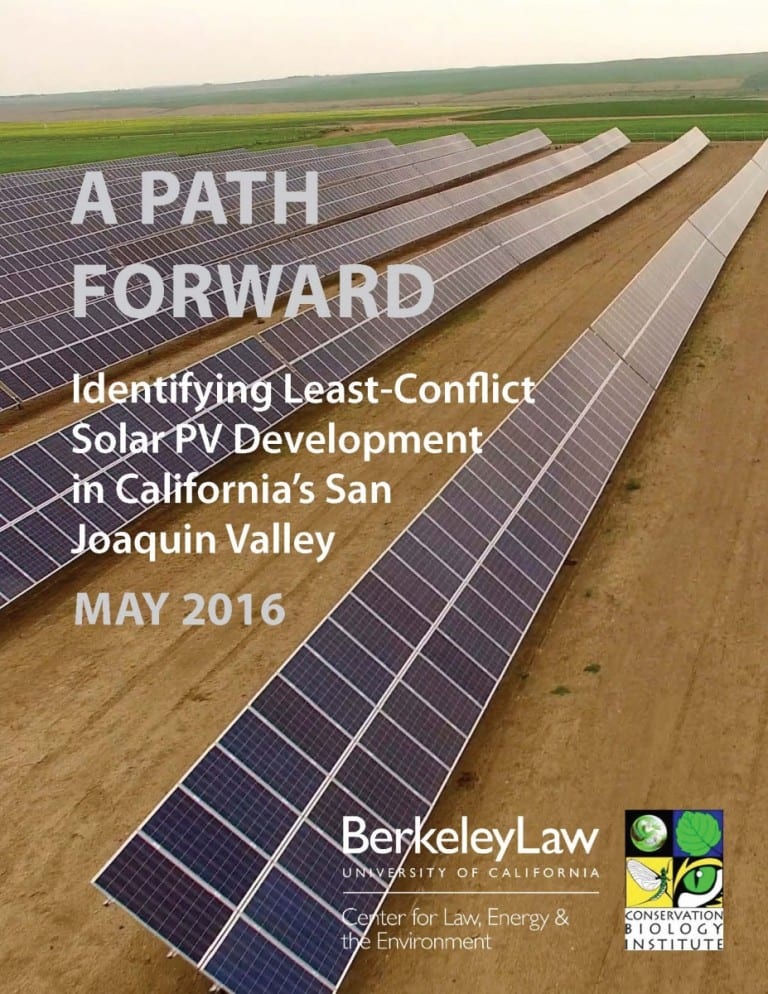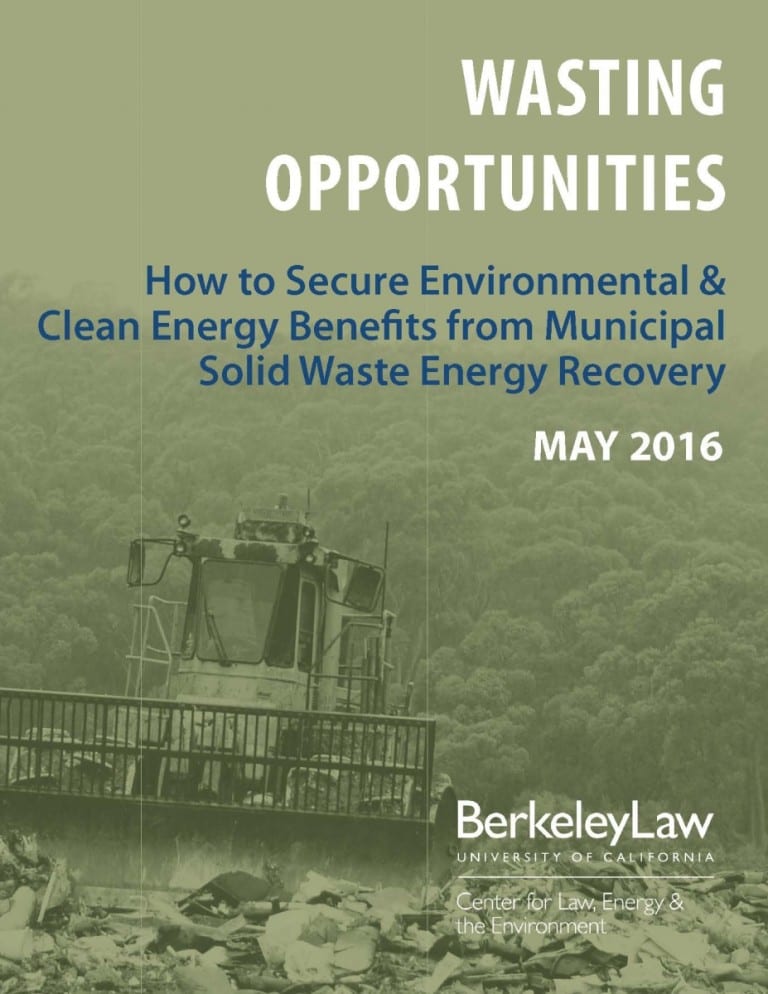Expansion of utility-scale renewable development is necessary for California to achieve its climate goals, but individual projects struggle with decisions about siting. Our clean technology siting reports examine how land use planning can better enable energy project development.
November 2018
A New Solar Landscape: Improving County-Level Landscape Planning for Utility-Scale Solar PV Facilities
 Senate Bill 100 (de Leon, 2018) requires California’s major utilities to obtain 60 percent of their electric power from renewable sources by 2030 and 100 percent from carbon-free sources by 2045. California has met and exceeded its renewable energy targets to date, with over one-third of the utilities’ electricity coming from renewable sources.
Senate Bill 100 (de Leon, 2018) requires California’s major utilities to obtain 60 percent of their electric power from renewable sources by 2030 and 100 percent from carbon-free sources by 2045. California has met and exceeded its renewable energy targets to date, with over one-third of the utilities’ electricity coming from renewable sources.
Our new report, A New Solar Landscape, offers a suite of policy solutions for incentivizing and improving landscape-level planning to meet California’s solar development goals.
May 2016
Mapping Lands to Avoid Conflict for Solar PV in the San Joaquin Valley
California’s push to achieve 50 percent of our electricity from renewable sources by 2030 will entail a significant deployment of large-scale solar photovoltaic (PV) installations. But in places like the San Joaquin Valley, proposed installations have engendered conflicts with agricultural and conservation groups, who fear a resulting loss of valuable lands and the species and farming and ranching that depend on them. Berkeley Law’s Center for Law, Energy and the Environment (CLEE) partnered with Conservation Biology Institute (CBI) and Terrell Watt Associates to develop a new process to find “least-conflict” lands in the eight-county San Joaquin Valley region.
May 2016
Securing Environmental Benefits from Solid Waste Energy Recovery
Californians send 30 million tons of waste to landfills annually. While reduction, recycling and composting can do their part, not all types of materials can be practically and economically recycled in an environmentally beneficial manner. This leftover trash stream may therefore present an opportunity to recover energy, using new and possibly cleaner technologies. However, California lacks an agreed-upon set of standards for measuring and balancing the life-cycle costs and benefits of various waste management methods, including energy conversion. This report recommends solutions for the state to address this challenge.

